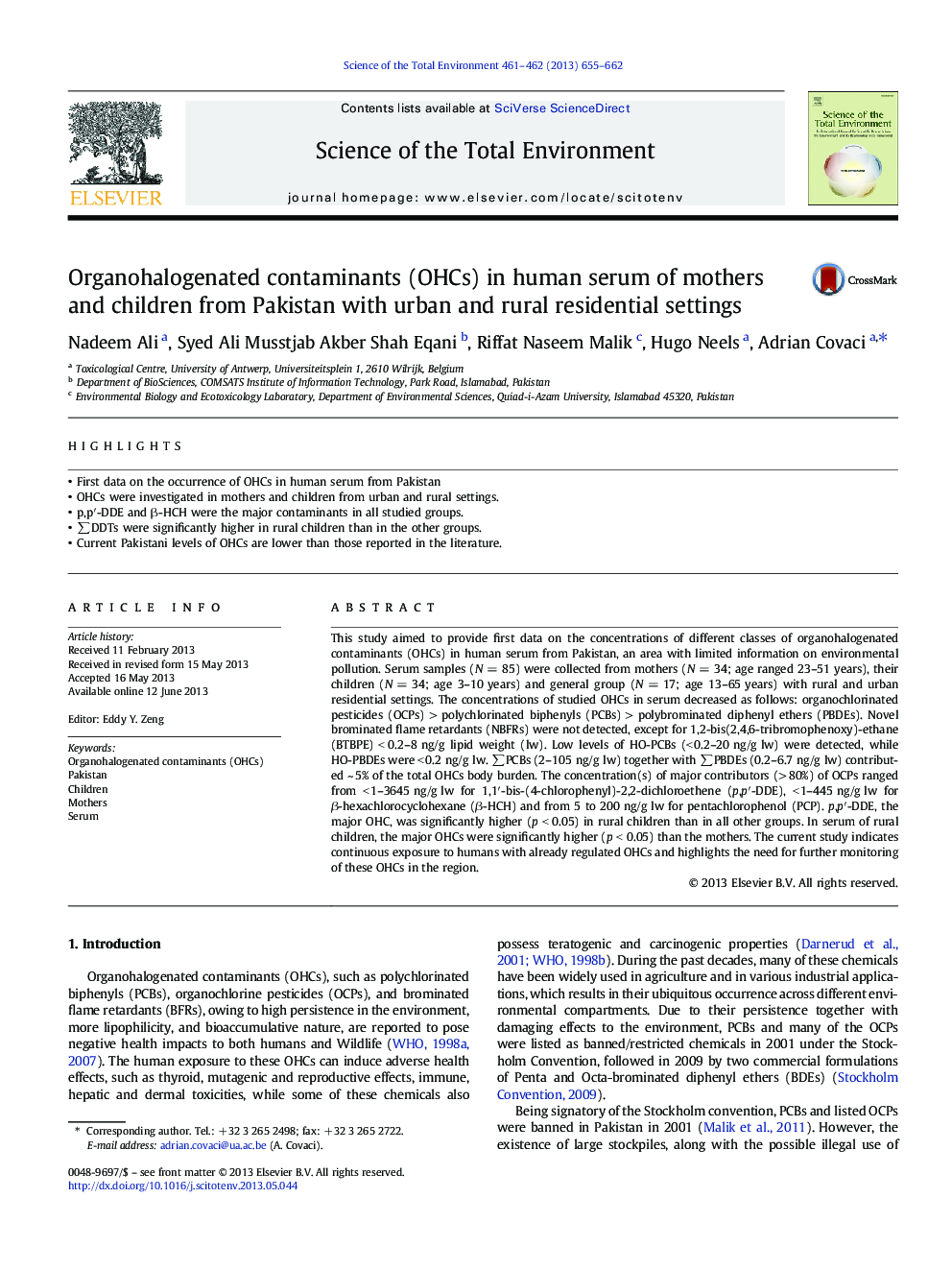| Article ID | Journal | Published Year | Pages | File Type |
|---|---|---|---|---|
| 6332013 | Science of The Total Environment | 2013 | 8 Pages |
Abstract
This study aimed to provide first data on the concentrations of different classes of organohalogenated contaminants (OHCs) in human serum from Pakistan, an area with limited information on environmental pollution. Serum samples (N = 85) were collected from mothers (N = 34; age ranged 23-51 years), their children (N = 34; age 3-10 years) and general group (N = 17; age 13-65 years) with rural and urban residential settings. The concentrations of studied OHCs in serum decreased as follows: organochlorinated pesticides (OCPs) > polychlorinated biphenyls (PCBs) > polybrominated diphenyl ethers (PBDEs). Novel brominated flame retardants (NBFRs) were not detected, except for 1,2-bis(2,4,6-tribromophenoxy)-ethane (BTBPE) < 0.2-8 ng/g lipid weight (lw). Low levels of HO-PCBs (< 0.2-20 ng/g lw) were detected, while HO-PBDEs were < 0.2 ng/g lw. âPCBs (2-105 ng/g lw) together with âPBDEs (0.2-6.7 ng/g lw) contributed ~ 5% of the total OHCs body burden. The concentration(s) of major contributors (> 80%) of OCPs ranged from < 1-3645 ng/g lw for 1,1â²-bis-(4-chlorophenyl)-2,2-dichloroethene (p,pâ²-DDE), < 1-445 ng/g lw for β-hexachlorocyclohexane (β-HCH) and from 5 to 200 ng/g lw for pentachlorophenol (PCP). p,pâ²-DDE, the major OHC, was significantly higher (p < 0.05) in rural children than in all other groups. In serum of rural children, the major OHCs were significantly higher (p < 0.05) than the mothers. The current study indicates continuous exposure to humans with already regulated OHCs and highlights the need for further monitoring of these OHCs in the region.
Related Topics
Life Sciences
Environmental Science
Environmental Chemistry
Authors
Nadeem Ali, Syed Ali Musstjab Akber Shah Eqani, Riffat Naseem Malik, Hugo Neels, Adrian Covaci,
